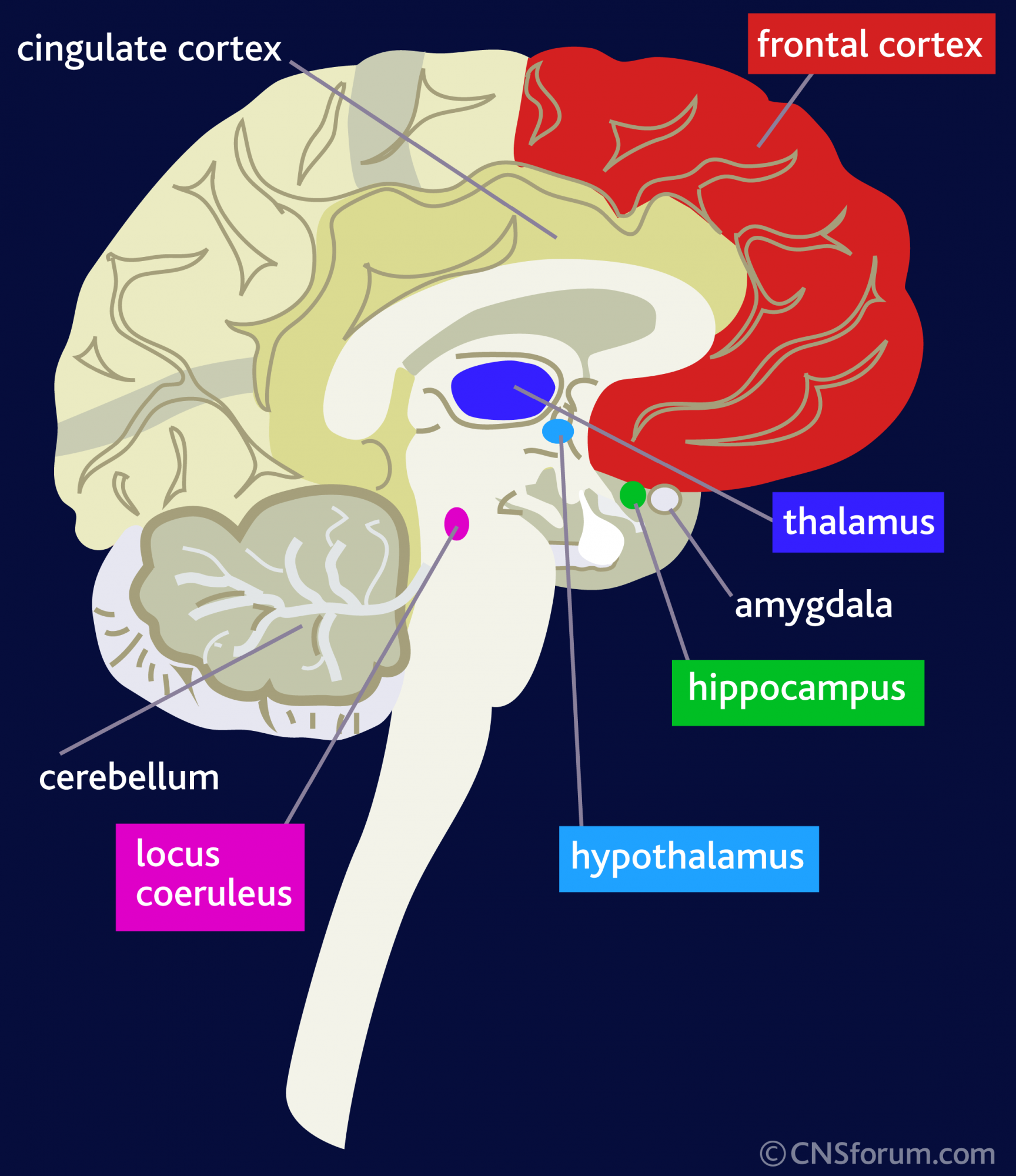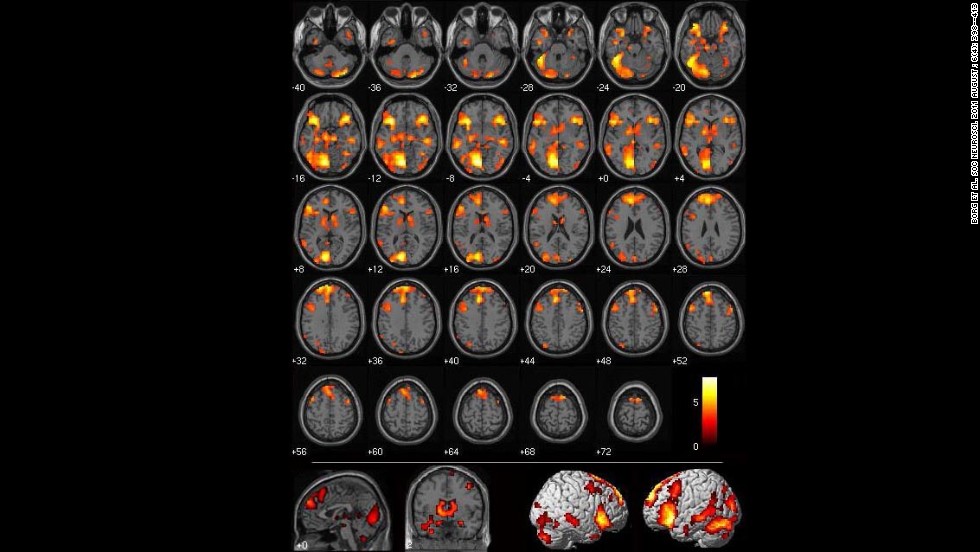BY SUNAINA RAJANI
Introduction
Imagine an impulse to sneeze. Now imagine if it were illegal. While we don’t intend to sneeze and can’t suppress a sneeze, most of us can suppress other urges.
One fundamental principle of jurisprudence is that humans have some ability to control their impulses and make decisions derived from an innate moral compass. Humans are assumed to have the freedom to choose how to act through a logical reasoning structure: forming intentions based on goals, responding to reason, and acting rationally.[i] When the courtroom encounters people who do not act through a logical reasoning structure, a central challenge for the criminal justice system is balancing the need for consistent and objective interpretation of laws with the need to acknowledge individuals’ mental limitations.
What if the brain is damaged or loses the ability to reason and control an individual’s actions? How is the law to be interpreted then? Are the policies updated accordingly with neuroscientific discoveries?
The basic assumptions of American jurisprudence were solidified before society understood much about the brain; however, new neuroscientific discoveries are breaking barriers as we develop new perspectives of the brain. Neuroscience delves into the why and the how by looking at how we act on a fundamental—neuronal—level.
Historical Use of Neuroscience in the Criminal Justice System
The use of neuroscience in the criminal justice system is not new, as the brain controls humans’ ability to decipher between choices, actions, and “right” versus “wrong.” As former US Federal Judge Nancy Gertner, now a professor at Harvard Law School, said, “so many legal concepts involve state of mind. The defendant’s state of mind defines the difference between first degree murder and the lesser degrees of murder, like manslaughter. His or her intent can define the crimes of which he or she is convicted. It obviously figures in the insanity defense.”[ii] In addition, courts sentence juvenile offenders differently than adult offenders, as they recognize the distinction between the adolescent and adult brain.[iii]
For decades, it has been clear that physical abnormalities in the brain impact behavior. According to David Eagleman, a neuroscientist at Baylor College of Medicine, scientists discovered by the late 1800s that amygdalar damage could result in emotional and social disturbances.[iv] Around the 1930s, Heinrich Klüver and Paul Bucy demonstrated that lesions on monkeys’ amygdalae led to a constellation of symptoms involving overreaction, emotion, and impaired fear management.[v] Female monkeys with damaged amygdala neglected or physically abused their infants.[vi] Eagleman stated that “in humans, activity in the amygdala increases when people are shown threatening faces, are put into frightening situations, or experience social phobias.” Physical brain abnormalities can mitigate criminal culpability, as the following two cases suggest.
Case Studies
The 1966 Texas Tower Sniper shooting at the University Texas at Austin was considered at the time to be “the largest mass murder in American history.”[vii]The shooter, twenty-five-year-old student Charles Whitman, killed fourteen people and wounded thirty-two others from the twenty-eighth floor observation deck of UT Tower. An officer shot and killed Whitman on the deck an hour and half after he began shooting.[viii] Officers found a suicide note Whitman had written the night before, requesting an autopsy.[ix]
A neuropathologist conducted an autopsy on Whitman and discovered a rapidly growing bean-sized tumor in regions that could have impaired Whitman’s judgment and impulse control. This tumor was pushing against a brain structure called the thalamus (see Figure 1),[x] associated with impulse control, while also compressing the amygdala, associated with emotional regulation.[xi]
Figure 1.
The areas of the brain affected by generalized anxiety disorder (Source: CNSforum.com)
Whitman was described as “high-spirited and lots of fun as a child, [who] gave no trouble,” an exemplary student growing up, well-liked at UT Austin, and an enlisted member of the US Marine Corp.[xii] Given the nation’s perplexity at his actions, Texas Governor John Connally commissioned a task force of leading neurosurgeons, psychiatrists, pathologists, and psychologists from all over the country. The commission reviewed Whitman’s medical history and brain tumor, concluding that the “highly malignant brain tumor conceivably could have contributed to his inability to control his emotions and actions.”[xiii] This conclusion has evolved and is shared by many neuroscientists today. According to Eagleman, “Whitman’s intuition about himself—that something in his brain was changing his behavior—was spot-on.”[xiv] It’s possible that if the tumor hadn’t been present, Whitman would not have committed mass murder.
In addition to cases involving murder, there are additional cases that show a connection between physical brain abnormalities and pedophilia. According to a case report by Burns and Swerdlow, orbitofrontal abnormalities—including tumors—are associated with poor impulse control, altered sexual behavior, and acquired sociopathy, symptoms that can manifest as pedophilia. This case reports a forty-year-old man whose sexual preferences began to shift toward an interest in child pornography. He was ultimately found guilty of child molestation, and then was sentenced to rehabilitation in lieu of prison. He took himself to the ER voluntarily – with no court order, where he underwent a brain scan that revealed a massive tumor in the orbitofrontal cortex of the brain. After the tumor was removed his sexual preferences returned to normal. However, his pedophilic preferences returned. He went back to a neuroradiologist and found that a portion of tumor had been missed in the surgery and was growing again. The tumor was once more removed, and his sexual preferences normalized.[xv]This illustrates the importance of including neuroscience in the courtroom, as identifying and treating the underlying cause of criminal activity is better than giving an ineffective punishment.
These cases demonstrate how abnormalities in the brain can impair individuals’ cognitive abilities in a way that catalyzes criminal behavior. Cognitive abilities include executive functioning (EF), which is essentially a set of cognitive, self-regulatory, and higher processes that are provoked by goal-directed thought and behavior. Elements of EF include planning, mental flexibility, impulse control, and response inhibition. These overarching mental abilities are especially pertinent for the criminal justice system, as offenders rely less on EF when making moral and social judgments compared to the general population.[xvi]
Criminal Justice System and Mental Health
Intent is a critical attribute of EF, in terms of goal-directed thought, as well as an element critical in criminal culpability. In doing so, the criminal justice system considers the defendant’s knowledge, volition, capacity, and impulsivity when committing the crime. Mens rea—the intent to harm—is a necessary element determining criminality of crime as it ties together the aforementioned factors.[xvii] Conviction requires proof of mens rea.[xviii] Insanity, lack of specific intent, and diminished capacity/responsibility defenses potentially negate or obviate mens rea as an element of crime.[xix] However, the reality is that there is some implicit bias affecting judges and juries’ legal interpretations affecting determination of criminal responsibility.
As legal actors and decision-makers give context and meaning to existing regulations, assessments of EF and intent can vary from court to court. In Massachusetts, “a person is not responsible for criminal conduct if at the time as a result of mental disease or defect he lacks substantial capacity either to appreciate the criminality [wrongfulness] of his conduct . . .”[xx]In Texas, “a criminal defendant asserting insanity defense must prove that mental disease or defect caused defendant to commit conduct constituting offense which is charged; mental condition must cause defendant’s inability to distinguish right from wrong.”[xxi]
The court’s overall interpretation of the above statutes, and therefore of guilt itself, is ultimately subjective. According to Proctor, “This is particularly concerning in the area of mental disease and the determination of whether a defendant . . . has the ability to appreciate the wrongfulness of their actions.” Moreover, there are equitability concerns, as those who are less able to afford the best experts must rely on “state-funded experts, who are often hit or miss when it comes to their competency and expertise,” adds Proctor.[xxii] Additionally, even if the defendant raises an insanity defense at trial, such verdicts are extremely rare. Less than 1 percent of felony cases raise the insanity defense—of those, only a small percentage are successful.[xxiii] According to the National Institute of Mental Health, 90 percent of the defendants claiming insanity had been diagnosed with a mental illness.[xxiv] The question, then, is how neuroscience can bridge the gap to making the overall determination of criminal responsibility and sanity more objective.
Despite recognizing impaired EF’s impact on a person’s actions, the current criminal justice system continues to fail distinguish between neurological patients (those that should go to the hospital) and disciplinarian patients (those that should go to prison).[xxv]
Considering over a million mentally ill prisoners currently comprise over half of the prison population, how should courts better assess defendants’ intent?[xxvi]
In 2014, about 9.8 million people in the United States suffered from severe mental illness.[xxvii] According to the US Department of Justice, in 2005, more than half of the estimated 2.2 million prison and jail inmates had a mental health problem: 56 percent of inmates in state prisons, 45 percent in federal prisons, and 64 percent in local jails.[xxviii] About 1.5 million of the 2.3 million inmates in the nation’s prisons and jails meet the Diagnostic and Statistical Manual of Mental Disorders (DSM-IV) medical criteria for substance abuse or addiction.[xxix]Fewer than 20 percent of them actually receive treatment.[xxx]The criminal justice system’s lack of awareness of these EF impairments often leads to sentencing that does not address the underlying problems.
Recent Advances in Neuroscience
Revolutionary neurotechnologies provide new insight into the cognition of the brain, especially in assessing mental impairments. New technologies are better able to view brain circuitry and atypical neural structures, revealing locations of interruptions in cognition and EF.[xxxi]
For centuries, scientists were able to examine the brain only post-mortem. The introduction of MRIs and CT scans in the late 1970s allowed scientists to view brain structure non-invasively. Recent technology like the Functional MRI (fMRI) has made it possible to observe and approximate brain activity in real time that corresponds to varied actions, experiences, and functions (see Figure 2).[xxxii] The spectrum of available technologies includes fMRIs, which can localize functional brain activation by showing the difference between stimulated and unstimulated brain tissue; [xxxiii] Diffusion Tensor Imaging (DTI), which shows neuronal connectivity and organization; [xxxiv] electroencephalography (EEG), which records electrical activity of a brain cell; [xxxv] and the recent, optogenetics technology, which allows us to control brain cells with light.[xxxvi]
Figure 2.
fMRI Images: “How your brain makes moral judgments.” Cnn.com. 27 March 2014.
These techniques also allow us to compare the functional organization of different brains, potentially providing insight into the cause of criminal behavior. In the future, this could improve the court’s ability to distinguish between neurological versus disciplinarian patients.
The field of neuroscience is at the frontier of science. The discipline is rapidly advancing, catalyzed by the White House BRAIN (Brain Research through Advancing Innovative Neurotechnologies) Initiative announced by President Barack Obama in 2013. Over $300 million in investments have been contributed toward neuroscientific revolutionary measures in an effort to understand the human brain and mind.[xxxvii] This opens the window to understanding how people think and execute their intentions, with direct implications for the US criminal justice system.
Scientific progress in neuroscience fosters the growth of the emerging interdisciplinary fields of neurolaw and neurocriminology. Advances in neuroscience intersect with the justice system in a novel way: they can provide objective criteria of criminal responsibility, clarify parameters and interpretations of legal statutes, and improve judgements of recidivism while also tailoring treatment to reflect underlying conditions.
Objective Criteria of Criminal Responsibility
Robert Proctor, clinical instructor at the Harvard Law School’s Criminal Justice Institute, says that “expert opinion is often presented under a veneer of objectivity.” Norms, implicit biases, and lack of neuroscientific knowledge affect determination of criminal culpability, thereby increasing the chance of human error. Not only does this bias shape judges’ evidentiary calls but also their statutory interpretations. Often an expert’s evaluation entails a review of the defendant’s medical records, an interview of the defendant, and, if the defendant is lucky, essential interviews with witnesses and family members.[xxxviii] This evaluation, too, is ultimately subjective but could be enhanced by neuroscience.
In jury trials, determination of insanity remains a subjective conclusion that a jury may or may not accept. The question, then, is whether neuroscientific advances will be useful in the courtroom. Proctor adds, that we can help improve criminal responsibility analysis by “applying universally accepted scientific sources and methods of analyzing and interpreting the science of mental disease and defect” to ultimately will ensure fair access to justice in our criminal justice system.[xxxix]
In the neuroscientific sphere, fMRI studies have developed a robust composite of average brain activity that can be compared to a defendant’s state of mind. In doing so, courts might be able to assess capacity, impulsivity, and fear management through a more objective lens. For example, when one experiences fear, scientists can assess to what degree can one generally ‘distinguish right from wrong’ by comparing brain activity. Moreover, recent brain imaging techniques can assess impaired EF and other cognitive abilities, thereby improving a jury’s overall evaluation of the defendant’s ability to distinguish right from wrong.
It is important these neurotechnologies are applied not only in individual courts, but uniformly throughout the justice system. Depending on the justice system’s level of neuroscientific awareness and the court’s standards, judicial interpretations vary. Unfairly, similarly-situated defendants may receive different outcomes, especially in terms of sentencing. Setting standards using awareness of neuroscientific advances could ultimately help reduce these disparities and better tailor sentencing outcomes to minimize recidivism.
Reducing Recidivism
Societal parameters implement punitive measures to reduce recidivism. However, imprisonment hasn’t fully achieved the goal of prevention. With an improved determination of criminal responsibility, courts may be able to implement a more tailored approach toward individuals with impaired neural constructs. Currently, most defendants with mental illnesses end up incarcerated.In 2007, a study found that 60 percent of offenders found not guilty by reason of insanity and sent to hospital were less likely to reoffend than untreated inmates released from jails.[xl]Additionally, in fields where neuroimaging and computer science intersect, there is the potential to develop an algorithm that evaluates levels of recidivism.
Neuroscientific criteria can inform tailoring treatment according to degrees of dysfunction. The sooner atypical neural structures are detected, timely and adequate interventions can decrease the risk of criminal careers or prevent avoidable crimes.
In light of the current criminal justice strategy’s ineffectiveness and new understandings of EF from neuroscience, we must reform the criminal justice system. An increased understanding of our neural architecture opens the door to more objective criteria for criminal responsibility, insanity, and the determination of criminal punishment. The legal system must evolve to incorporate neuroscientific discoveries to increase courts’ objectivity and reduce recidivism. Concrete reforms could include providing distinct dockets for defendants with disorders, tailored plans for rehabilitation and treatment, and neurocriminology training for judges, police officers, and lawyers.
Discoveries in neuroscience add to our understanding of the human brain every day. Taking these new findings into account, we can better understand how to ensure justice while keeping people safe and healthy.
 Sunaina Rajani is a Harvard Class of 2016 graduate with a master’s degree concentrating in cognitive neuroscience (Mind Brain and Education: MBE), and University of Texas at Austin class of 2013 undergraduate. Sunaina interned for the Texas Autism Project, Goldman Sachs & Co, and ABC News and as a 2012 Bill Archer Fellow in Washington, D.C., interned for the National Science Foundation (NSF). She is interested in neural plasticity, human consciousness and intelligence, morality, and decision-making; especially where neuroscience, consciousness, and law intersect.
Sunaina Rajani is a Harvard Class of 2016 graduate with a master’s degree concentrating in cognitive neuroscience (Mind Brain and Education: MBE), and University of Texas at Austin class of 2013 undergraduate. Sunaina interned for the Texas Autism Project, Goldman Sachs & Co, and ABC News and as a 2012 Bill Archer Fellow in Washington, D.C., interned for the National Science Foundation (NSF). She is interested in neural plasticity, human consciousness and intelligence, morality, and decision-making; especially where neuroscience, consciousness, and law intersect.
[i] Gertner, Nancy, “Law and Neuroscience.” Class Lecture, Harvard University, Cambridge, 3 February 2016.
[ii] Gertner, Nancy, Interview by Sunaina Rajani. E-mail. Cambridge, MA, January 26, 2016.
[iii] Carroll, Jenny E. “Brain Science and the Theory of Juvenile Mens Rea.”North Carolina Law Review, Forthcoming (2015).
[iv] David Eagleman, “The Brain on Trial,” The Atlantic, July 2011, http://www.theatlantic.com/magazine/archive/2011/07/the-brain-on-trial/308520/.
[v] Higgins, Edmund S., and Mark Stork George. Neuroscience of Clinical Psychiatry: The Pathophysiology of Behavior and Mental illness. Lippincott Williams & Wilkins, 2013, pg 265. https://books.google.com/books?id=HiPKQfs98-0C.
[vi] Toscano, J. E., M. D. Bauman, W. A. Mason, and D. G. Amaral. “Interest in infants by female rhesus monkeys with neonatal lesions of the amygdala or hippocampus.” Neuroscience 162, no. 4 (2009): 881-891.
[vii] Whitney Milam, “Sniper 66–the Charles Whitman Murders Part 1,” YouTube [Video File], last modified 17 February2014, accessed 6 January 2015, https://www.youtube.com/watch?v=MKtP57U0nnM.
[viii]Whitney Milam, “Sniper 66–the Charles Whitman Murders Part 1.”
[ix] “Charles Whitman Suicide Note,” Alt.CIMedia.com, 31 July 1966, http://alt.cimedia.com/statesman/specialreports/whitman/letter.pdf
[x] “The areas of the brain affected by generalised anxiety disorder,” CNSforum.com. 4 July 2014. https://www.cnsforum.com/upload/imagebank/download/Neuro_biol_PTSD.png
[xi]David Eagleman, “The Brain on Trial.”
[xii] https://tshaonline.org/handbook/online/articles/fwh42
[xiii]“Press Conference: Report to the Governor Medical Aspects: Charles J. Whitman Catastrophe,” Alt.cimedia.com, 8 September 1966, http://alt.cimedia.com/statesman/specialreports/whitman/findings.pdf.
[xiv]David Eagleman, “The Brain on Trial,”
[xv]Burns, Jeffrey M., and Russell H. Swerdlow. “Right orbitofrontal tumor with pedophilia symptom and constructional apraxia sign.” Archives of Neurology 60, no. 3 (2003): 437–440.
[xvi]Robert Byron, “Criminals Need Mental Health Care,” Scientific American, 1 March 2014, http://www.scientificamerican.com/article/criminals-need-mental-health-care/.
[xvii]Kadish, Sanford H., and Monrad G. Paulsen. Criminal law and its processes: Cases and materials. Little, Brown, 1975. http://www.amazon.com/Criminal-Law-Its-Processes-Materials/dp/0735557942
[xviii]“Common Law Mens Rea,” NationalParalegal.edu, 2016, http://nationalparalegal.edu/public_documents/courseware_asp_files/criminalLaw/basicElements/CommonLawMensRea.asp
[xix]Jones, Owen D., Joshua Buckholtz, Jeffrey D. Schall, and Rene Marois. “Brain imaging for legal thinkers: a guide for the perplexed.” Stanford Technology Law Review 5 (2009): 10-09.
[xx]Commonwealth v. McHoul, 352 Mass. 544 (1967).
[xxi]Olivier v. State, App. 14 Dist. (1993).
[xxii]Proctor, Robert, Interview by Sunaina Rajani. In-person interview and E-mail message. Cambridge, MA, October 30 2015 and February 12 2016.
[xxiii]Michael Perlin, The Jurisprudence of the Insanity Defense, (Carolina Academic Press, 1994), 108, published on Prison Policy, http://www.prisonpolicy.org/scans/DTAP%20Sixteenth%20Annual%20Report.pdf.
[xxiv]Bulletin of the American Academy of Psychiatry, Vol. 19, No. 4, 1991.
[xxv]Gertner, Nancy, “Law and Neuroscience.” Class Lecture, Harvard University, Cambridge, 22 February 2016.
[xxvi]Doris J. James and Lauren E. Glaze, “Special Report: Mental Health Problems of Prison and Jail Inmates,” U.S. Department of Justice: Bureau of Justice Statistics, last modified 14 December 2006, http://www.bjs.gov/content/pub/pdf/mhppji.pdf.
[xxvii]“Serious Mental Illness (SMI) Among U.S. Adults,” National Institute of Mental Health, last modified 2014, http://www.nimh.nih.gov/health/statistics/prevalence/serious-mental-illness-smi-among-us-adults.shtml.
[xxviii]Doris J. James and Lauren E. Glaze, “Special Report: Mental Health Problems of Prison and Jail Inmates,” U.S. Department of Justice: Bureau of Justice Statistics, last modified 14 December 2006, http://www.bjs.gov/content/pub/pdf/mhppji.pdf.
[xxix]“Behind Bars II: Substance Abuse and America’s Prison Population,” The National Center on Addiction and Substance Abuse at Columbia University, last modified in February 2010. http://www.casacolumbia.org/addiction-research/reports/substance-abuse-prison-system-2010.
[xxx]“Alcohol, Drugs and Crime” National Council on Alcoholism and Drug Dependence, Inc., 27 June 2015, https://ncadd.org/about-addiction/alcohol-drugs-and-crime.
[xxxi]Carlson, S. M., P. D. Zelazo, and S. Faja. “Executive function.” Oxford Handbook of Developmental Psychology 1 (2013): 706-743.
[xxxiii]Mark S. Cohen, and Susan Y Bookheimer. “Localization of brain function using magnetic resonance imaging.” Trends in neurosciences 17, no. 7 (1994): 268–277. http://www.ncbi.nlm.nih.gov/pubmed/7524210
[xxxiv]Karl Deisseroth, “Optogenetics: Controlling the Brain with Light [Extended Version].” Scientific American. 20 October 2010. http://www.scientificamerican.com/article/optogenetics-controlling/.
[xxxv]Pascual-Marqui, Roberto D., Christoph M. Michel, and Dietrich Lehmann. “Low resolution electromagnetic tomography: a new method for localizing electrical activity in the brain.” International Journal of psychophysiology 18, no. 1 (1994): 49-65. http://www.sciencedirect.com/science/article/pii/016787608490014X
[xxxvi] Mori, Susumu, and Jiangyang Zhang. “Principles of diffusion tensor imaging and its applications to basic neuroscience research.” Neuron 51, no. 5 (2006): 527-539. http://www.sciencedirect.com/science/article/pii/S0896627306006349
[xxxvii]“About the BRAIN Initiative.” White House. September 2014. https://www.whitehouse.gov/BRAIN.
[xxxviii]Proctor, Robert, Interview by Sunaina Rajani. In-person interview and E-mail message. Cambridge, MA, October 30 2015 and February 12 2016.
[xxxix]Proctor, Robert, Interview by Sunaina Rajani. In-person interview and E-mail message. Cambridge, MA, October 30 2015 and February 12 2016.
[xl]Robert Byron, “Criminals Need Mental Health Care,” Scientific American, 1 March 2014, http://www.scientificamerican.com/article/criminals-need-mental-health-care/.


